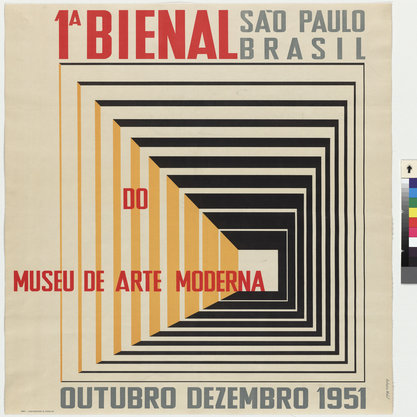Article
São Paulo Biennial By de Fátima Morethy Couto, Maria
Article
The São Paulo Biennial was a daring enterprise modelled on the Venice Biennial that took place for the first time in 1951 in Brazil due to a series of sociocultural and political factors, including a booming industrial sector looking to assert itself socially within Brazilian society. The São Paulo Biennial, the first of its kind in Latin America, looked at propagating Brazil’s image internationally in both the art scene and in the political and economic contexts. Its first instance in 1951 was led by the industrialist Francisco Matarazzo Sobrinho, better known as Ciccillo Matarazzo (1898–1977), who had also spearheaded the founding of the Museu de Arte Moderna de São Paulo (MAM-SP) half a decade earlier. The biennials above all promoted the circulation of artists, artworks and cultural agents, which was key in the exchange of information, tendencies, and tastes. At a time when the number of art magazines published in Brazil was reduced and travelling abroad was not easy, the São Paulo Biennials connected Brazilians with international contemporary production through the organization of vast retrospectives of modern pioneers such as Paul Klee, Mondrian, and Picasso in 1953, Léger in 1955, and Pollock in 1957.


